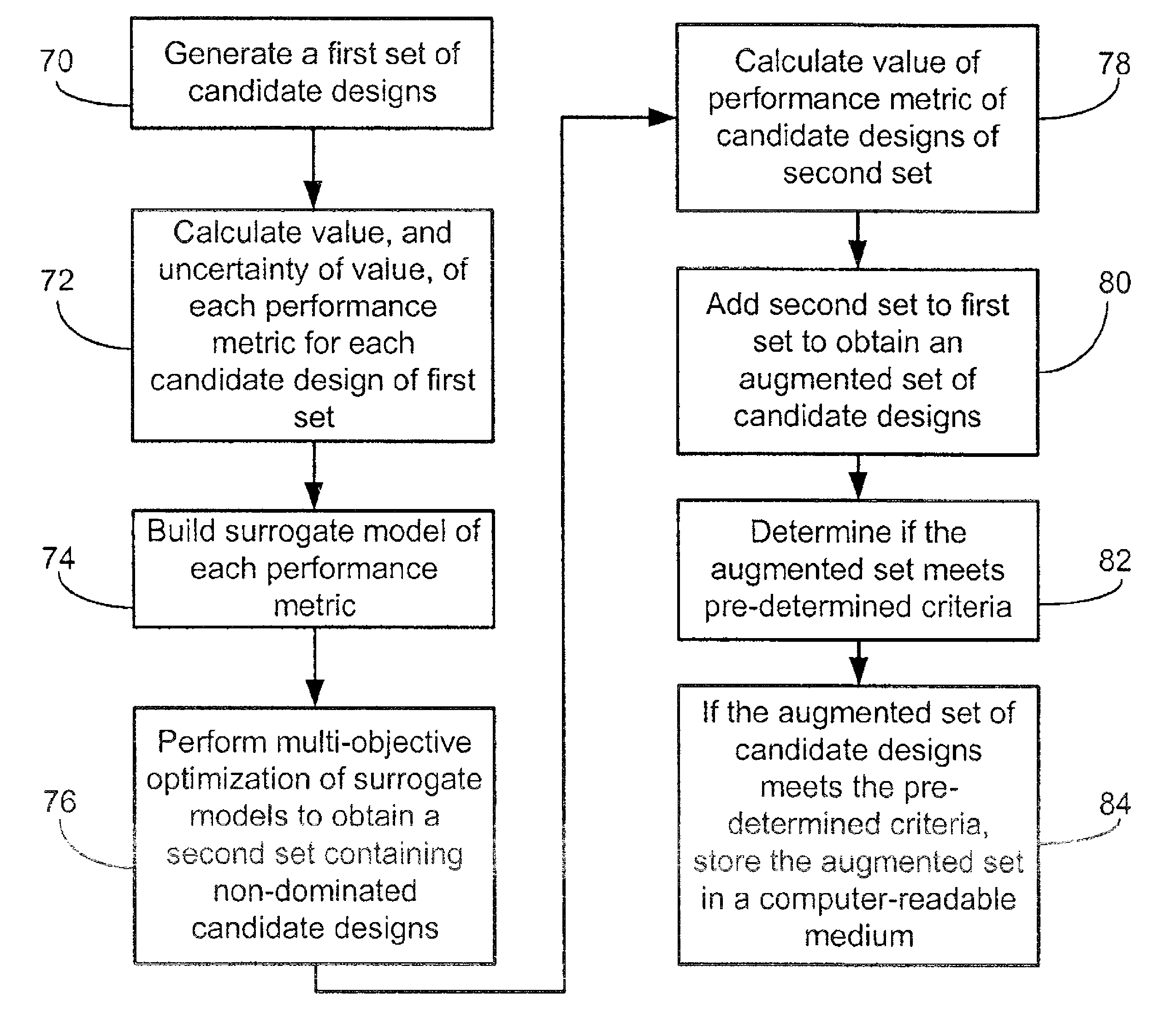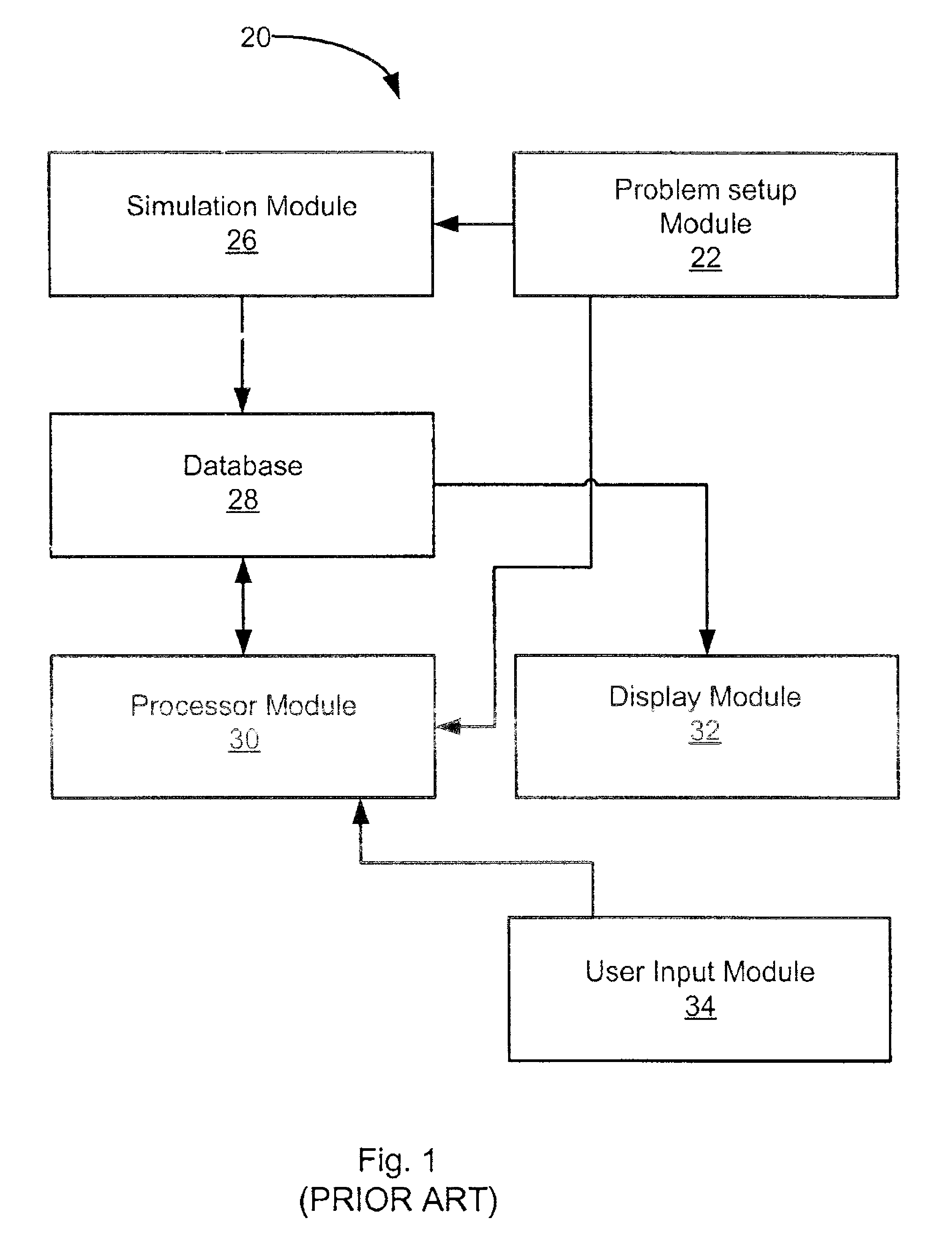Model-building optimization
a model-building and optimization technology, applied in multi-objective optimisation, cad techniques, instruments, etc., can solve the problems of limited number of candidate designs that can actually be examined, preventing the use of optimization algorithms, and a challenge in optimizing
- Summary
- Abstract
- Description
- Claims
- Application Information
AI Technical Summary
Benefits of technology
Problems solved by technology
Method used
Image
Examples
Embodiment Construction
[0058]Generally, the present invention provides a method and system for optimization of multi-parameter designs, e.g., electrical circuit designs, using model-building approaches. The present invention resolves exploration vs. exploitation issues via multi-objective inner optimization, or via stochastic choices of how to balance exploration vs. exploitation. The present invention resolves speed issues in model building and simulation by generating more than one candidate design point at once for a given model. The present invention resolves model building scalability issues via an ensemble-style framework in which nearly any regressor can be used rather than just regressors that directly output uncertainty.
[0059]FIG. 5 shows a first example of a method of the present invention. Given a multi-parameter design (MPD) to optimize, the MPD having variables and performance metrics, the first step is to generate a first set of candidate designs, which is shown at 70. The first set of candi...
PUM
 Login to View More
Login to View More Abstract
Description
Claims
Application Information
 Login to View More
Login to View More - R&D
- Intellectual Property
- Life Sciences
- Materials
- Tech Scout
- Unparalleled Data Quality
- Higher Quality Content
- 60% Fewer Hallucinations
Browse by: Latest US Patents, China's latest patents, Technical Efficacy Thesaurus, Application Domain, Technology Topic, Popular Technical Reports.
© 2025 PatSnap. All rights reserved.Legal|Privacy policy|Modern Slavery Act Transparency Statement|Sitemap|About US| Contact US: help@patsnap.com



